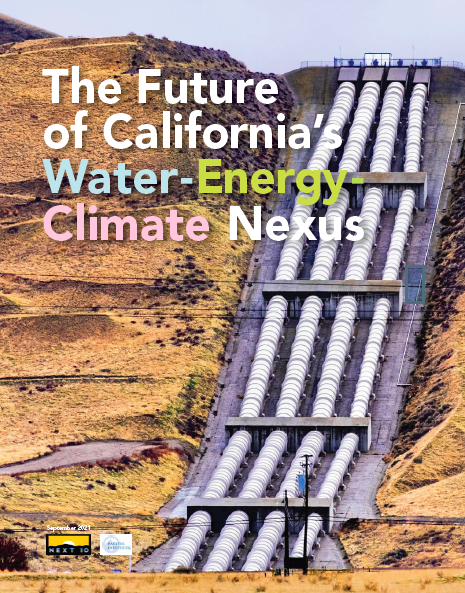
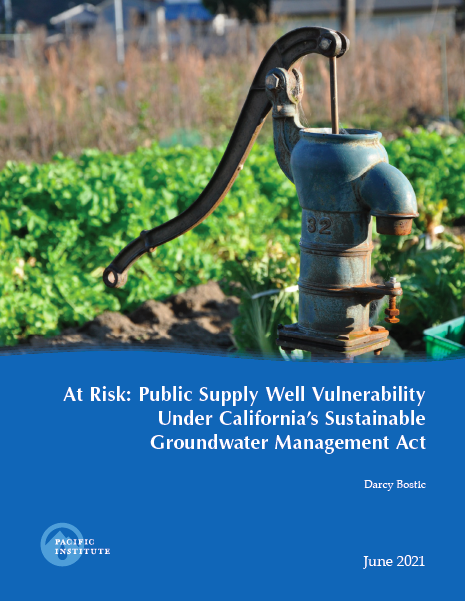
This report examines public drinking water supply well vulnerability under California’s Sustainable Groundwater Management Act. It focuses on wells and water systems in the San Joaquin Valley due to the area’s social and economic significance, high concentration of water-related challenges, and availability of developed groundwater sustainability plans. The report finds that 503 of the 1,200 public supply wells in the region, or 42%, are likely to be partially or fully dry at the minimum thresholds established in the region’s sustainability plans. It includes recommendations to support small water systems and domestic wells and improve the resilience of groundwater sustainability Plans, in line with the state’s Human Right to Water.
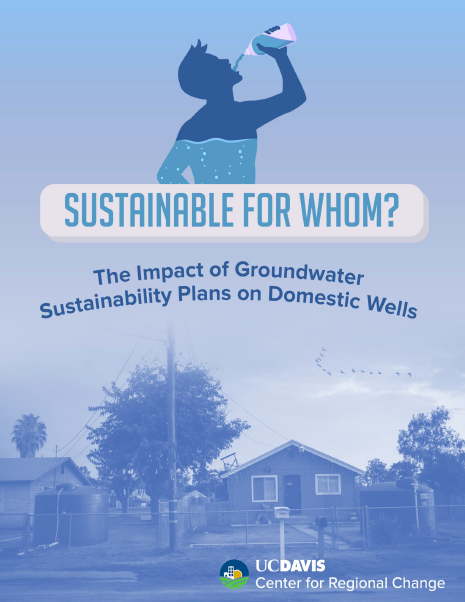
This report analyzes 41 groundwater sustainability plans in 19 critical priority water subbasins in California to assess monitoring network coverage and the vulnerability of domestic wells to minimum water thresholds, which indicate the lowest groundwater level considered sustainable. The report finds that at least 1,000 to 6,000 wells are at risk of failure in critical priority water basins under proposed minimum water thresholds, and includes recommendations to achieve sustainable groundwater management in California compatible with the state’s efforts to achieve the human right to water.
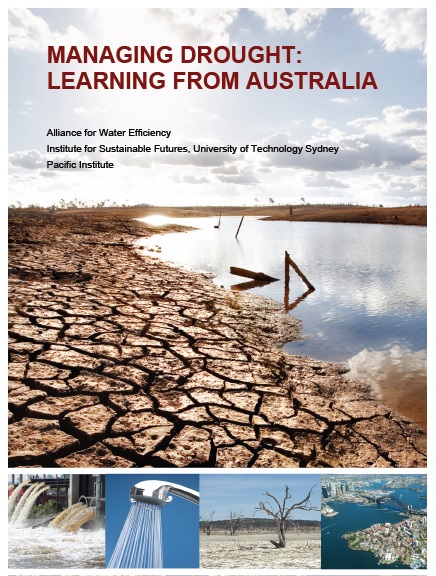
This report shows that strategies developed and mistakes made during Australia’s decade-long millennium drought provide a powerful resource for California, as the state enters its fifth year of severe drought.

This analysis, published in the journal Environmental Research Communications, evaluates the costs of four groups of alternatives for urban supply and demand based on data and analysis in the California context: stormwater capture; water recycling and reuse; brackish and seawater desalination; and a range of water conservation and efficiency measures. It also describes some important co-benefits or avoided costs, such as reducing water withdrawals from surface water bodies or polluted runoff in coastal waterways.
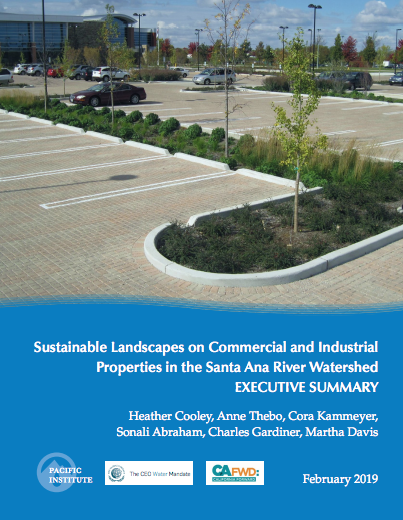
The study finds that there are significant opportunities for the business community in California’s Santa Ana River Watershed to contribute to shared watershed goals through investments in sustainable landscape practices on their properties. These landscapes can improve surface water quality, flood management, and water supply reliability, while also reducing energy usage and associated greenhouse gas emissions, sequestering carbon, improving ecosystem and human health, promoting economic activity, and enhancing community resilience. This project is a collaboration between the Pacific Institute, California Forward, and the Santa Ana Watershed Project Authority.
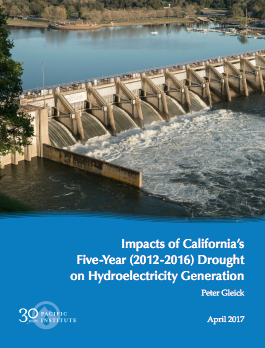
This comprehensive assessment of the costs to California of lost hydroelectricity during the five-year California drought (from October 2011 to the end of September 2016; the official California “water year” runs from October 1 to September 30) reveals an increase in electricity costs of approximately $2.45 billion, as well as a 10 percent increase in the release of carbon dioxide from California power plants due to the additional combustion of fossil fuels for electricity generation.
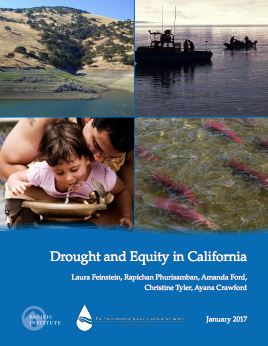
This report finds that low-income families, communities burdened with environmental pollution, and those dependent on salmon for their livelihood and traditions are highly vulnerable to problems of water supply shortages, rising unaffordability, and insufficient stream flows during drought. The report offers a range of solutions, from changing the way drought water surcharges are calculated to consolidating small water systems.
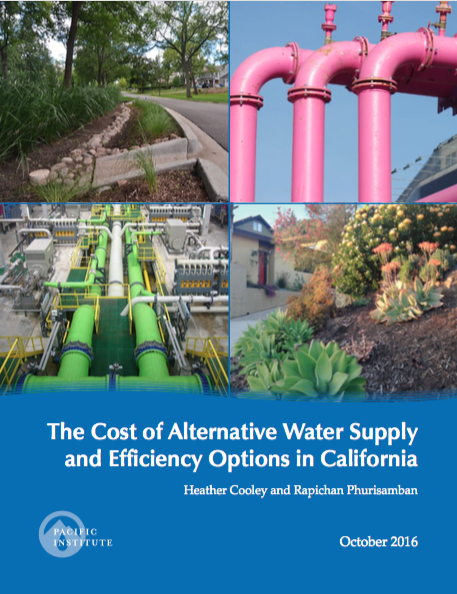
This study is the first comparative analysis of the costs of alternative water supply and efficiency options in drought-stricken California, from seawater desalination to recycled water and water efficiency measures. The report will help communities prioritize cost-effective water solutions.
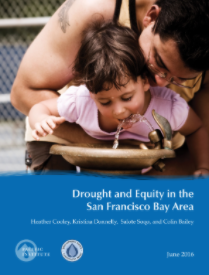
This study examines the impacts of the California drought on disadvantaged communities in the San Francisco Bay Area, and finds that affordability issues and water infrastructure conditions are key concerns for these communities, as well as the inequitable use of water.
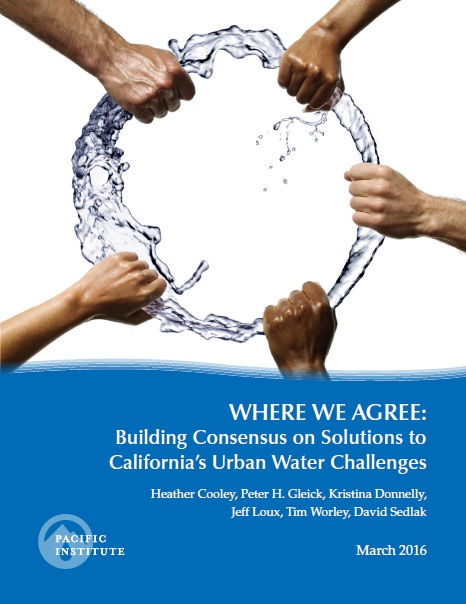
This report documents practical solutions for California’s urban water challenges put forth by a diverse group of stakeholders. The results are a set of recommendations for policymakers, municipal water managers, businesses, and community groups with the potential for broad support.
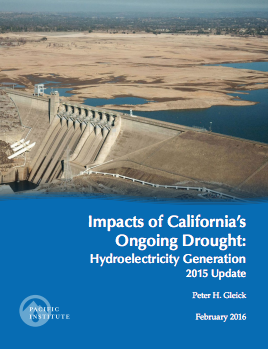
This update to the 2015 report includes a comprehensive assessment of the costs to California of lost hydroelectricity during the four years of drought from October 2011 to the end of September 2015 (the official California “water year” runs from October 1 to September 30).
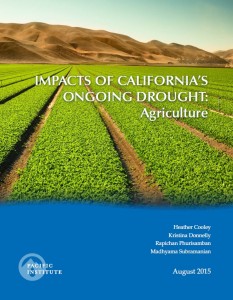
This study is the first comprehensive analysis of the actual impacts of the drought on California agricultural revenue and employment through 2014 – the last year for which data are available.
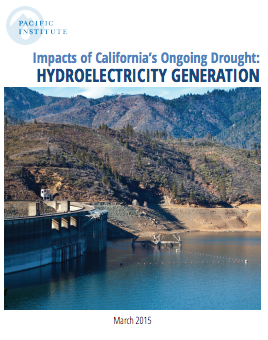
This report that reveals that diminished river flows have resulted in less hydroelectricity, more expensive electricity, and increased production of greenhouse gas emissions.
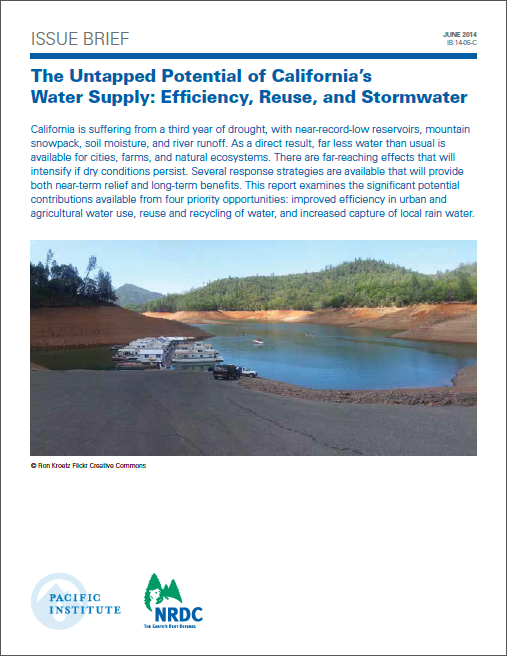
California could be saving up to 14 million acre-feet of untapped water – providing more than the amount of water used in all of California’s cities in one year – with an aggressive statewide effort to use water-saving practices, reuse water, and capture lost stormwater. Find the reports, infographic, and factsheets here.
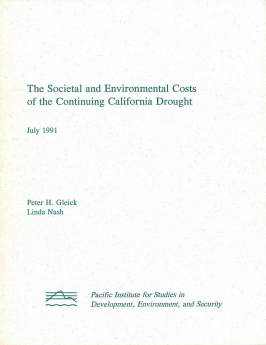
This report examines the information available in 1991 for a wide variety of sectors on the impacts and economic costs of the California drought that began in 1987. The assessment includes what the current drought at that time was telling us about California’s vulnerability to global climate change.
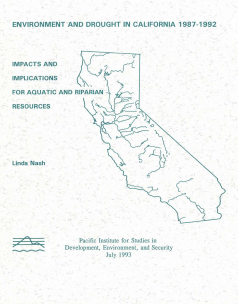
Highly modified ecosystems like so many in California are more likely to suffer permanent changes during extended dry periods. Although California’s plant and animal populations have weathered severe droughts in the past, there are factors now that prevent wild populations from rebounding as they once might have.
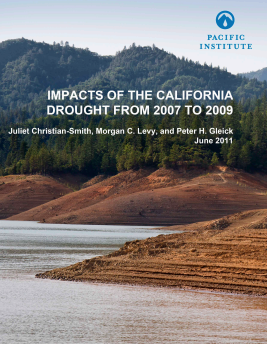
Analysis of state and federal data finds that contrary to much of the media reporting, California’s agricultural community proved flexible and resilient, generating agricultural revenues in 2007, 2008, and 2009 that were the highest on record.
A selection of blogs authored by Pacific Institute staff with potential solutions to drought crises.
All Together Now? Differences in Water Shortage Conditions Across California
by Cora Kammeyer / July 20, 2021
The 2021 Western Drought: What to Expect as Conditions Worsen
by Cora Kammeyer, Peter Gleick, Heather Cooley, Gregg Brill, Sonali Abraham, and Michael Cohen / June 28, 2021
Simple Steps for Businesses to Transform Their Landscapes
by Cora Kammeyer and Sonali Abraham / August 28, 2020
4 Reasons Why Urban Landscapes are a Linchpin for Climate Resilience
by Cora Kammeyer / July 23, 2019
Can California Shift to Proactive Drought Preparedness?
by Cora Kammeyer and Heather Cooley / March 3, 2019
Climate Resilience in the Urban Context: Sustainable Landscapes for Southern California Businesses
by Cora Kammeyer / February 6, 2019
National Geographic Presents: Water Scarcity
by Peter Gleick / February 22, 2017
National Geographic ScienceBlogs: Diablo Canyon, Climate Change, Drought, and Energy Policy
by Peter Gleick / June 24, 2016
National Geographic ScienceBlogs: Global Droughts: A Bad Year
by Peter Gleick / April 27, 2016
National Geographic ScienceBlogs: Impacts of the California Drought, Part 2: Net Agricultural Income
by Heather Cooley, Kristina Donnelly, and Peter Gleick / September 3, 2015
National Geographic ScienceBlogs: Impacts of the California Drought: Agriculture
by Peter Gleick and Heather Cooley / August 26, 2015
New Data Show California Cities’ Progress towards State-Mandated Conservation Requirements
by Kristina Donnelly / August 6, 2015
National Geographic ScienceBlogs: The California Drought: Almonds and the Bigger Picture
by Peter Gleick / July 9, 2015
New Data Show California Cities’ Response to Drought Is Highly Uneven
by Matthew Heberger / March 24, 2015
The Impacts of California’s Drought on Hydroelectricity Production
by Peter Gleick / March 24, 2015
The State of the California Drought: Still Very Bad
by Peter Gleick / March 24, 2015
The Growing Influence of Climate Change on the California Drought
by Peter Gleick / March 24, 2015
Huffington Post: When Our Responses to Drought Make Things Worse
by Peter Gleick / October 18, 2014
What about Desalination during the Drought?
by Amanda Pebler / August 27, 2014
Planning For Rain: Why Storm Water Management Matters during the Drought
by Paula Luu / August 27, 2014
The Multiple Benefits of Water Conservation and Efficiency for California
by Heather Cooley / July 29, 2014
Why Has the Response to the California Drought Been so Weak?
by Peter Gleick / July 20, 2014
Over Twenty-Five Years Later, How Does the Drought in California Compare?
by Amanda Pebler / July 20, 2014
Urban Water Conservation and Efficiency – Enormous Potential, Close to Home
by Matthew Heberger, Pacific Institute, and Ed Osan, NRDC / June 10, 2014
A Tale of Two Farms: How Water Efficiency Could Help Drought-Proof California Farms
by Heather Cooley, Pacific Institute, and Claire O’Connor, NRDC / June 10, 2014
Clarifying the Discussion about California Drought and Climate Change
by Peter Gleick / March 7, 2014
Finding Light (and Water) at the End of the (Drought) Tunnel, on the Farm and for the Future
by Anna Olive Klein / February 11, 2014
Learning from Drought: Five Priorities for California
by Peter Gleick / February 10, 2014
The Costs of California’s Bellwether Drought: What Can We Expect?
by Peter Gleick / February 7, 2014
California’s Bellwether Drought
by Peter Gleick / February 5, 2014
Infographic: What We Can Expect from the Drought
by Paula Luu / January 24, 2014
What Can Californians Expect from the Drought
by Peter Gleick / January 16, 2014
Time to Tap into Water-Wise Farmers’ Well of Ideas
by Peter Gleick, Heather Cooley, and Juliet Christian-Smith / October 14, 2008
Panic Makes for Poor Policy
by Pacific Institute / July 23, 2007
February 7, 2020: Comments from the Pacific Institute on the Draft Water Resilience Portfolio from the State of California
January, 8, 2020: Comments from the Pacific Institute on Proposed Urban Water Conservation Reporting Regulations for the State of California.
January 18, 2017: Letter from Pacific Institute President Peter Gleick, Pacific Institute Water Program Director Heather Cooley, and others to California Governor Jerry Brown urging further water conservation and efficiency measures.
December 19, 2016: Comments from Pacific Institute Water Program Director Heather Cooley, Sara Aminzadeh of the California Coastkeeper Alliance, Cynthia Koehler of WaterNow Alliance, Laurel Firestone of the Community Water Center, Jonathan Parfrey of Climate Resolve, and Conner Everts of the Environmental Justice Coalition for Water, and Tracy Quinn of the Natural Resources Defense Council on Implementing Executive Order B-37-16, Public Review Draft Comment.
October 2016: Comments on Water Waste Prohibitions from Pacific Institute Water Program Director Heather Cooley and others to the State Water Resources Control Board.
May 16, 2016: Letter from Pacific Institute Water Program Director Heather Cooley, Sara Aminzadeh of the California Coastkeeper Alliance, and Tracy Quinn of the Natural Resources Defense Council addressing the proposed modification and extension of emergency regulation for statewide urban water conservation to the California State Water Resources Control Board.
Jan. 28, 2016: Second letter from Pacific Institute Water Program Director Heather Cooley, Sara Aminzadeh of the California Coastkeeper Alliance, and Tracy Quinn of the Natural Resources Defense Council addressing the proposed regulatory framework for extended emergency regulation for urban water conservation to the California State Water Resources Control Board.
Jan. 6, 2016: Letter from Pacific Institute Water Program Director Heather Cooley, Sara Aminzadeh of the California Coastkeeper Alliance, and Tracy Quinn of the Natural Resources Defense Council addressing the proposed regulatory framework for extended emergency regulation for urban water conservation to the California State Water Resources Control Board.
Oct. 14, 2015: Letter from Pacific Institute Water Program Director Heather Cooley, Sara Aminzadeh of the California Coastkeeper Alliance, and Edward R. Osann of the Natural Resources Defense Council providing comments on the Conservation Regulations Workshop to the California State Water Resources Control Board.
Feb. 26, 2014: Pacific Institute President Peter Gleick’s testimony addressing the California drought to the California State Water Resources Control Board.